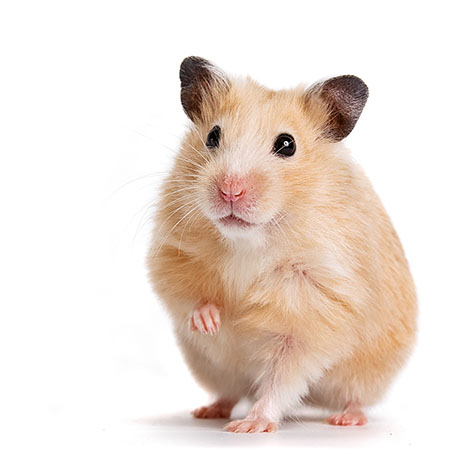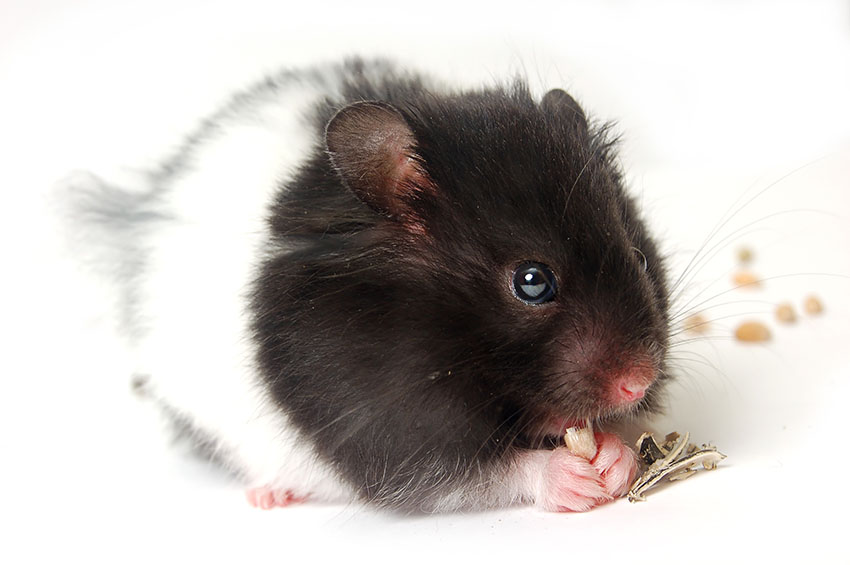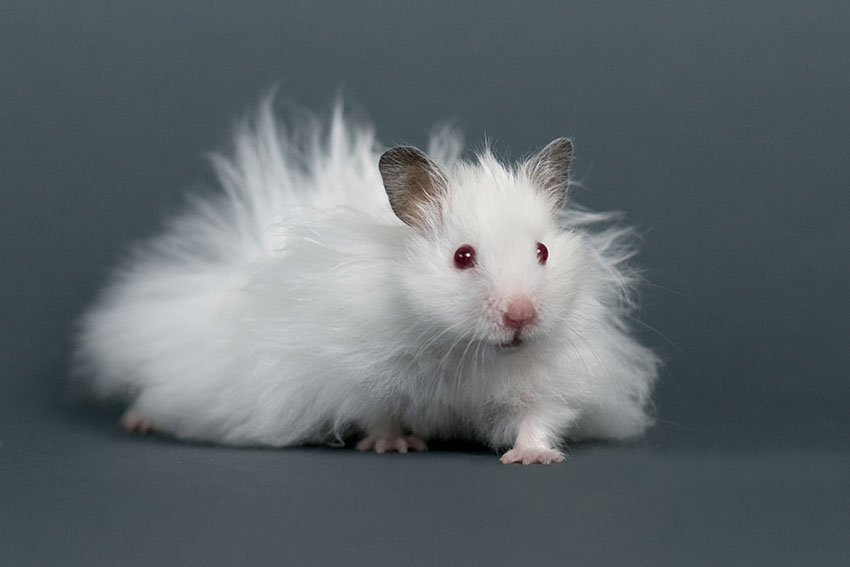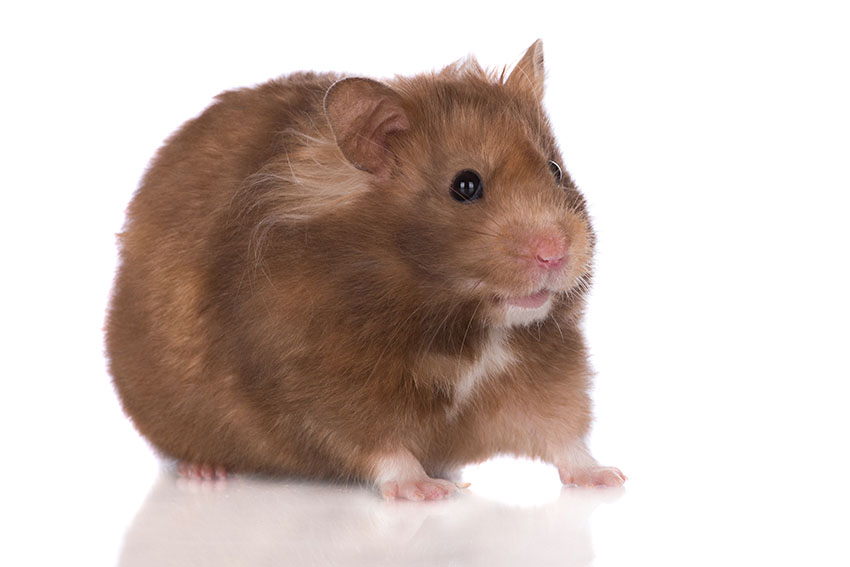It all began with a few pet Syrian hamsters back in the 1930s. But there are now several different species of hamster available as pets, and within those species different varieties, or ‘breeds’, have arisen. Syrian hamsters are available in many different varieties, while other hamster species have less variation.

Syrian hamsters are a very popular pet, and now come in many varieties
- Dominant Spot - these have a mainly white body, with patches of a different color. These spots vary in size, number and location on the body.
- Piebald - very similar to the Dominant Spots, but with white spots over a different color.
- Banded - this is a very popular variety, and has a white band on the middle of the body.

Banded Syrian hamsters come in lots of different colors
- Tortoiseshell - these hamsters have yellow spots over a different color. This main color alters the shade of the yellow spots accordingly, with darker base colors producing darker yellow. All Tortoiseshells are female - male hamsters do not possess the right genes.
- Tortoiseshell and White - very similar to Tortoiseshells, but with patches of white on their body as well. Like Tortoiseshells, they have a main color and yellow spots, and the shade of yellow is determined by their main color.
- Roan - these are mainly white, with specially-colored hairs that have some areas of non-white pigmentation. Breeding Roans is a tricky business, as they will always produce some malformed babies, due to genetic issues.
Hamster Hair Types
As well as different color patterns, hamsters can have different hair textures too: Long-haired, Short-haired, Rex, and Satin. Syrian hamsters can have coats of any of the variations listed below (and Campbell hamsters can have the Rex and Satin coats too).

Syrian Hamsters come in different coats - fur length and hair texture is a defining feature of different types
- Long-haired hamsters
- Short-haired hamsters
- Rex-haired hamsters
- Satin hamsters
These little animals have the longest hair in the hamster world - individual hairs can grow up to four inches! Their fur needs brushing regularly - several times a week - which is a major consideration when you are contemplating buying a long-haired hamster. If the hair is kept long it limits bedding choices, as it gets very tangled in materials such as hay, limiting the hamster’s movement and causing discomfort.
These have coats similar to wild hamsters. The hair is short and easy to keep clean and tidy, with little or no intervention from you.

Short haired hamsters have similar coats to their wild ancestors
Rex hair is wiry and fluffy, making them super-cute. When the hair is short it's wiry, when longer it's curly. Unfortunately, Rex hamsters are very susceptible to eye infections, as many have a slightly malformed eye. As with some other coat types, Rex hamsters shouldn’t be bred together, as their pups can develop severe eye problems.
These hamsters have very glossy hair, giving their coats a satin-like appearance. The hair is very thin, but looks very pretty. As with Roans, it is best not to breed Satins together, as they can have produce pups with very sparse fur.
Cautions
Hamster varieties are the result of selective inbreeding. The downside of this from a genetic point of view is that there are genes present in the hamster gene pool that can cause problems. For example, the Roan or White-bellied gene can cause serious birth defects in baby hamsters if there is more than one copy of the gene present in the pup. We strongly recommend learning about hamster genetics if you intend on breeding these animals. There are lots of good books available on the subject if you need any advice.
Comments
Angel, 25 April 2021
can the long haired and short haired syrian hamsters live together??